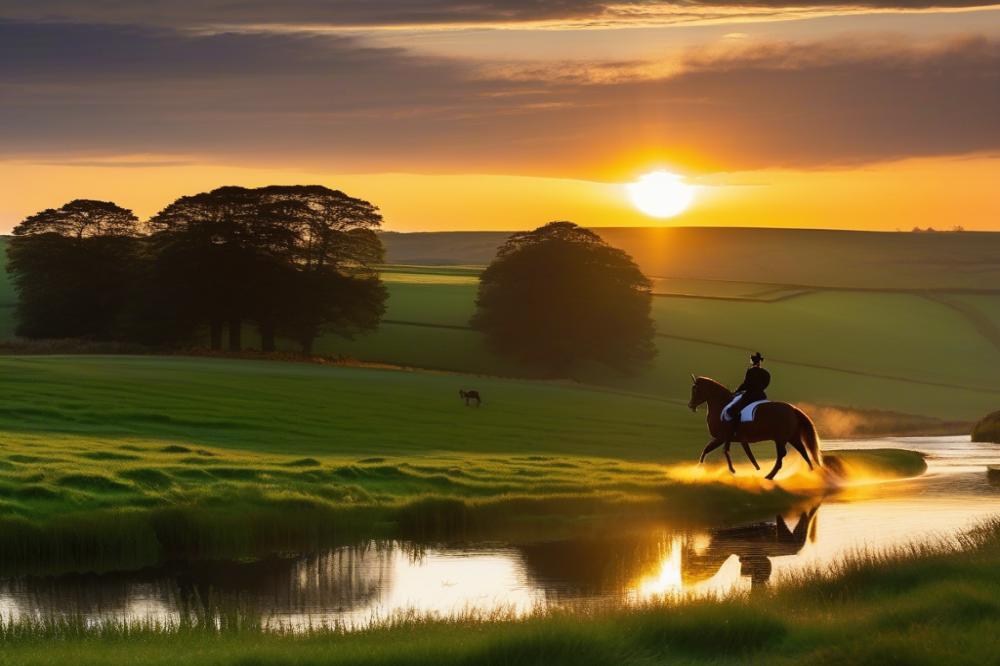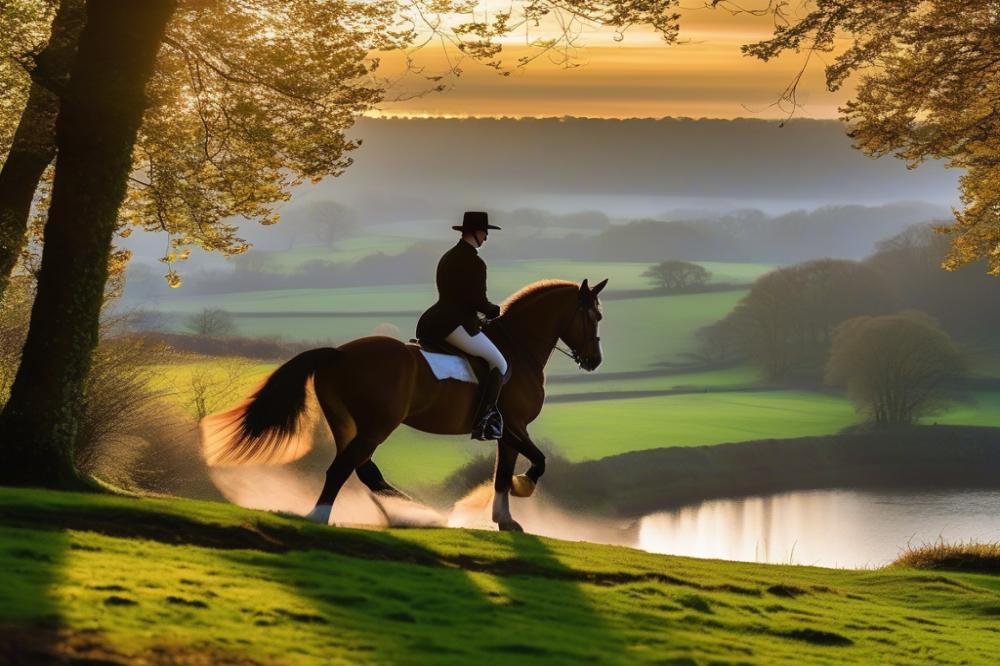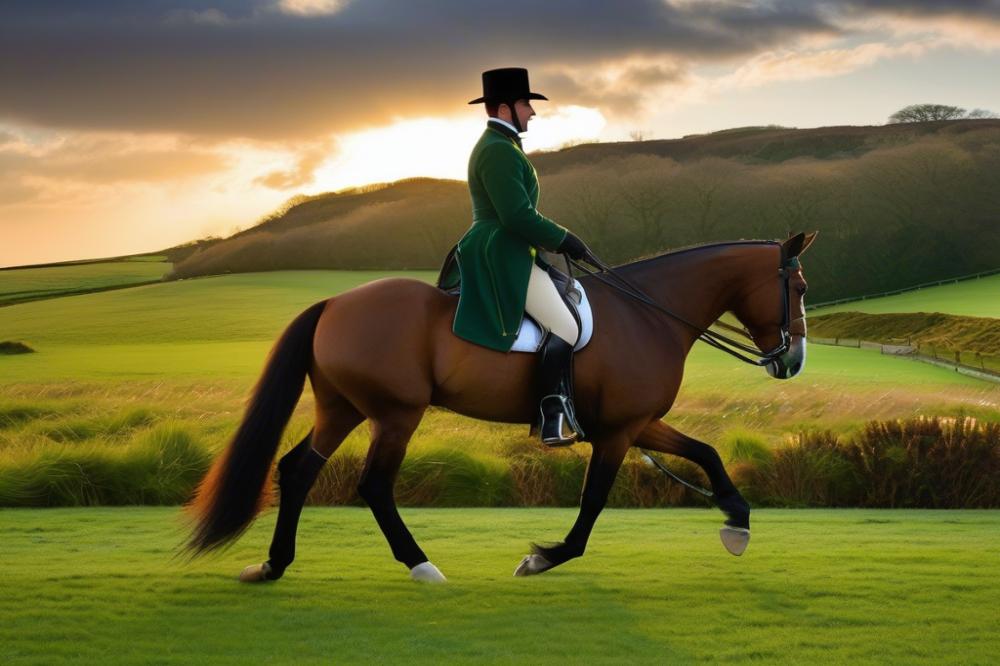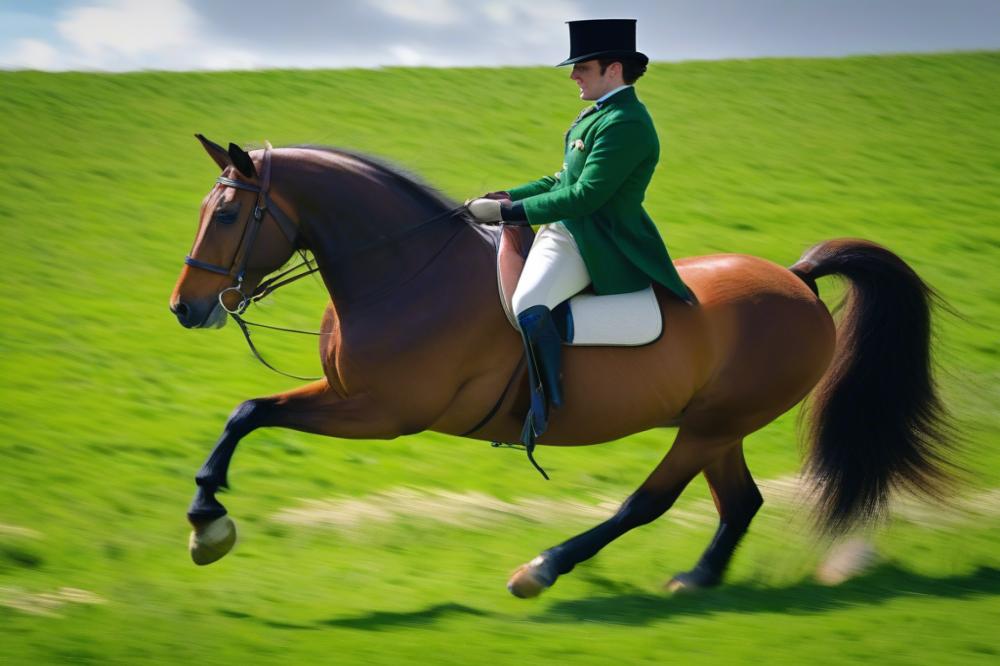Introduction
The Irish Draught Horse stands out in the world of equestrian pursuits. Known for its strength and versatility, this horse is well-suited for activities like fox hunting. Riders appreciate the horse’s calm demeanor and steady gait. Its solid build provides confidence in challenging terrain, making it a favored companion in the field.
Mastering proper riding techniques is vital for success in Fox Hunts. Effective communication between horse and rider is necessary for navigating through varied landscapes. A rider who understands their mount can make quick decisions during the hunt. Good techniques enhance safety and improve overall performance. Riders must be alert and responsive, as hunts can be unpredictable.
In essence, a deep knowledge of the horse and effective riding methods can lead to a more enjoyable hunt. When a rider feels secure and prepared, the experience transforms into something memorable. Connecting with the Irish Draught Horse aids in building a partnership of trust and respect. This bond is essential for thrilling adventures in the field.
Understanding the Irish Draught Horse

Physical characteristics and temperament
The Irish Draught Horse is known for its strong build and athleticism. These animals typically have a well-muscled frame, with a broad chest and powerful legs. Their height generally ranges from 15.2 to 16.3 hands, making them a solid choice for various types of riding. The coat can vary in color, often seen in bay, gray, and chestnut.
Temperament is just as important as physical traits. Most of these horses are calm and gentle. They possess a good temper and are willing to work closely with their riders. This combination of strength and friendliness makes them approachable and easy to handle. Riders often find that they can trust their instincts on a trail or during a hunt.
Why the Irish Draught Horse excels in Fox Hunts
This breed shows great versatility and stamina, essential qualities in a hunting situation. They navigate tough terrain without losing their balance or focus. It’s not uncommon for them to trot confidently over ditches and streams. Their agility allows them to change direction quickly, which is vital when foxes dart unexpectedly.
Riders appreciate their intelligence and versatility as well. These horses seem to understand cues more intuitively than many other breeds. Besides, they form strong bonds with their human partners, often leading to a greater sense of teamwork. Many experienced hunters prefer this breed precisely for these reasons.
Brief history and breeding of the Irish Draught Horse
Originating in Ireland, this breed has roots that go back hundreds of years. Farmers and soldiers once relied on these horses for work and transport. They were bred to withstand the rugged terrain of the Irish countryside. Over time, breeders selected the best qualities for riding and hunting.
Using a diverse gene pool helped shape what we see today. They were crossed with Thoroughbreds and other breeds to enhance athletic abilities and temperament. As a result, these horses not only maintain a sturdy build but also exhibit grace and speed. This rich history contributes to their strong presence in today’s equestrian activities, particularly in hunting events.
Essential equestrian techniques

Riding Posture and Balance Specific to Irish Draught Horses
Maintaining the right posture is crucial while riding any horse. With these robust animals, a rider should sit upright in the saddle. Keeping the shoulders back allows for better communication with the horse. Feet must be positioned correctly in the stirrups, resting with the ball of the foot on the stirrup. This positioning provides stability during jumps. A balanced rider can shift their weight easily. Leaning too far forward or backward can disrupt the horse’s rhythm. Core strength plays a vital role in achieving balance, especially on uneven terrain.
Importance of Horse Control in Hunting Scenarios
Control is key when navigating through hunts. Riders must be able to manage their horse’s speed and direction. Quick responses can prevent accidents in dense woods or around obstacles. Understanding your horse helps in maintaining this command. A calm and focused horse can make all the difference. Use gentle rein aids and consistent leg pressure for better responsiveness. Remember, shouting commands may startle the horse. Instead, clear and quiet communication fosters confidence.
Jumping Techniques Designed for Irish Draught Horses
Jumping requires a unique technique that complements the horse’s strengths. Approach obstacles with a steady rhythm, allowing the horse to gauge the jump. A light seat is optimal while preparing to leap. This means rising slightly out of the saddle to balance weight. Keep your hands steady as you jump, allowing the horse freedom to use its neck. As the horse lands, sit back into the saddle gently. This technique helps absorb shock and guides the horse into the next stride smoothly.
Saddle Fitting Considerations for Optimal Performance
A well-fitted saddle can enhance both comfort and control. Pay attention to the width and shape of the saddle. It should distribute weight evenly across the horse’s back. Checking for proper clearance with the horse’s withers is essential. Loose or tight saddles can lead to discomfort. Keep in mind that the rider’s comfort is equally important. A supportive saddle allows for better posture in the saddle, enhancing overall performance. Regularly assess the saddle fit as your horse develops muscle and condition.
Rider Preparation and Attire

Choosing the right hunting attire for comfort and safety
Dressing properly is crucial for any fox hunt. Riders should select clothing that allows for movement. Sturdy breeches or jodhpurs are popular choices. They provide both comfort and flexibility on the horse. A fitted hunting jacket adds a layer of warmth. It also gives a professional and polished appearance. Consider lightweight fabrics that breathe well. This is especially important if you will be outside for hours.
Layering for changing weather conditions
Weather can change quickly during a hunt. Riders should wear layers to prepare for sudden shifts in temperature. A moisture-wicking base layer helps keep sweat away. The next layer can be a thermal shirt for warmth on chilly mornings. Consider a waterproof jacket as a top layer. This protects against sudden rain showers. Remember to check the forecast before heading out. Staying dry and comfortable enhances the overall experience when riding.
Safety gear critical for fox hunting
Using proper safety gear is non-negotiable in fox hunting. A well-fitted riding helmet is the most important piece of equipment. It can protect against falls or accidents. Some riders also choose to wear body protectors for extra security. These vests absorb shock and cushion the body. Sturdy riding boots offer support and grip, essential for maintaining control. Ensure the heels are appropriate to prevent slipping through stirrups. Finally, gloves can improve grip and comfort on the reins. Choosing the right gear maximizes safety and helps you enjoy the ride.
Preparing the Irish Draught Horse
Horse conditioning and fitness for hunting
Rolling hills and woodlands often define a fox hunt. Conditioning your horse for these adventures is vital. Regular exercise builds stamina and strength. Galloping, trotting, and walking help develop endurance. An occasional ride over varied terrain boosts confidence as well. Consider how a horse’s muscles work during these activities. A balanced approach to fitness leads to a successful hunting experience.
Regular training routines and exercises
Establishing a routine keeps your horse engaged. Incorporate lunging sessions to improve flexibility and responsiveness. Riding in different environments helps your horse stay sharp. Practice jumping courses can enhance their skills and reactions. Mixing in dressage practice aids in developing balance and control. Understanding your horse’s needs allows for a tailored training plan.
Maintaining the horse’s health and soundness
Health management cannot be overlooked. Regular veterinary check-ups are crucial. Keep an eye on hooves as they impact overall performance. A farrier’s visit every six to eight weeks supports hoof care. Nutrition plays a significant role, so choose feeds wisely. Fresh water and ample hay should always be accessible. Make time for rest to prevent fatigue. Each of these steps contributes to a horse’s readiness for the hunt.
Fox Hunting Etiquette
Understanding the Rules and Customs of Fox Hunting
Fox hunting comes with its own set of traditions. Familiarity with these customs is important for every rider. For instance, following the designated routes helps maintain order in the hunt. Before you join, learning about the local practices is wise. The hounds are central to the chase; respect their role and be cautious around them. Remember to listen to your hunt leaders. They guide the group and know the terrain well.
Respecting Landowners and Fellow Riders
Show appreciation for landowners by staying on marked trails. Many farms allow riders to pass through their property. Thanking them at the end of the day can foster good relationships. Keep a respectful distance from other riders. Each person has their own riding style and speed. Engaging in friendly conversations can build camaraderie. When riding with friends, maintain proper distance to avoid accidents. Always prioritize safety over speed.
Navigating Trails and Obstacles Responsibly
Being aware of your surroundings is crucial. Trails may have unexpected bumps or branches. Look ahead for obstacles and plan your route. If a jump appears intimidating, give yourself time to assess. Approaching jumps calmly boosts your confidence and that of your horse. Stay alert for changes in the terrain that require adjustments in your riding posture. Remember, a smooth ride ensures a pleasant experience for everyone involved.
Outdoor Adventure and Trail Riding
Trail riding offers exciting opportunities for both horse and rider. Incorporating this activity into regular training can be very beneficial. A variety of terrains can significantly enhance a horse’s adaptability and skills. Riders often find that navigating hills, streams, and wooded paths builds a deeper bond with their mounts.
Confidence grows when encounters with different landscapes become part of riding routines. Steeper inclines teach balance, while sharp turns improve responsiveness. Gentle paths through forests provide a break from the usual. Horses gain experience and strength through diverse settings.
Scenic views are a wonderful perk while out hunting. Nature’s beauty surrounds everyone, creating a more enjoyable experience. Riders often take moments to appreciate the sights, adding joy to the journey. The thrill of moving through valleys or along riversides brings pleasure to all participants.
Skill also increases when riders are challenged. Crossing shallow streams can be daunting at first. As the horse and rider face these obstacles, they learn to trust each other more. Completing such tasks reinforces the sense of achievement.
Adding trail riding to the mix keeps things interesting. Riders can explore regions they might not see otherwise while honing their skills. This variation makes training fun and enjoyable, increasing motivation. Those who venture outdoors often discover a deeper appreciation for their surroundings and their horse.
Final Thoughts on Riding and Enjoying Fox Hunting
Recapping key equestrian techniques is vital for a successful experience on the hunt. Understanding how to maintain a balanced seat while navigating various terrains can make a significant difference. Riders should pay close attention to their posture, keeping their back straight and heels down. Similarly, the ability to communicate effectively with your mount is crucial. A gentle squeeze of the legs or subtle pull on the reins can guide a horse through fences and wooded areas.
Practicing these skills will undoubtedly lead to improvement. The more time spent in the saddle, the more confident you will become. Each hunt offers a chance to refine your abilities. Additionally, wearing the right hunting attire not only enhances your comfort but also complements the tradition of this thrilling sport. Proper clothing helps in maintaining focus on the ride, ensuring you are safe and prepared.
Enjoyment in fox hunting extends beyond just the ride itself. Sharing experiences with fellow hunters and appreciating the beauty of the outdoors are integral. Remember, the thrill should always come with a sense of responsibility. Respect for nature and fellow riders enhances the overall experience. By keeping these aspects in mind, you can engage in this exhilarating sport while upholding its cherished values.



